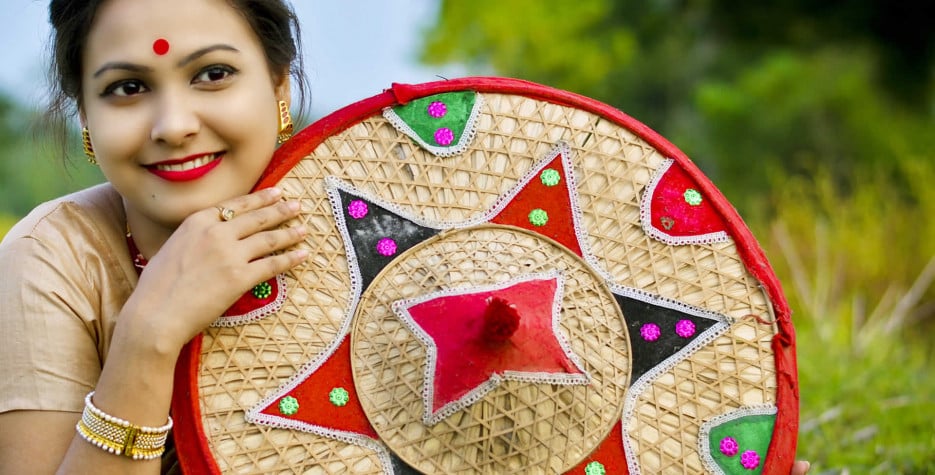When is Bohag Bihu?
Bohag Bihu is a regional public holiday celebrated in the Indian state of Assam on April 14th each year. Several days of public holidays may be declared depending on what day of the week it falls on and it is also sometimes a public holiday in the neighbouring state of Arunachal Pradesh.
Also known as Rongali Bihu, this is the national festival of Assam, one of the most beautiful states of India, famed for its tea gardens, green forests and the Brahmaputra river.
Traditions of Bohag Bihu
The Assamese celebrate three festivals called Bihu during the year - Rongaali Bihu or Bohag Bihu (April), Kati Bihu or Kongaali Bihu (October) and Magh Bihu or Bhogaali Bihu - each marking a distinct phase of the farming calendar.
Bohag Bihu marks the advent of the seeding time, the Kati Bihu marks the completion of sowing and transplantation of the saplings (‘Kothia’) and finally, Magh Bihu (January or February) marks the culmination of the harvesting period.
Bohag Bihu is the most important Bihu of the three. It is celebrated in the month of Bohaag (middle of April), the first month of the Assamese calendar and thus marks the advent of the Assamese New Year. This Bihu is also known as Rongaali ( 'Rong' means joy in Assamese) Bihu to reflect the optimism and festive atmosphere that marks these celebrations at the start of spring.
Bohag Bihu begins on April 14th and is celebrated for seven days.
The first day of the Bihu is called 'Garu Bihu'. On this day the household cattle are taken to the river and bathed and people pray for the wellbeing and safety of their livestock.
On the second day of Bihu called 'Manuh Bihu' people take a bath with a paste of turmeric. Various pithas or rice cakes and larus or laddus are eaten by families. Bihu functions are held at different localities and people visit neighbours and relatives to greet each other and pay their respect to the elders in the family by presenting them with a new ‘Gamosa’ ( a traditional Assamese hand-woven cotton towel with red designs with a white background).
The next day of Bihu is the 'Guxai bihu' or bihu of the household deities.
The fourth day is "Taator bihu' or bihu for the handlooms.
Next comes the 'Nangolor bihu' for the farming equipment.
The sixth day 'Gharosia Jibar bihu' is meant for the domestic animals.
The seventh and last day is called 'Chera bihu'.
Dance and Songs are the main features of this Bihu. The folk songs associated with Bohag Bihu are known as ‘Bihu Geet’, a symbolic communication of love and romance among the village youth. The dances are accompanied by traditional Assamese instruments.
The origin of the word ‘Bihu" is said to be from the Sanskrit word 'Vishu' and this is the name of a festival that takes place at the same time in the southern Indian state of Kerala.


